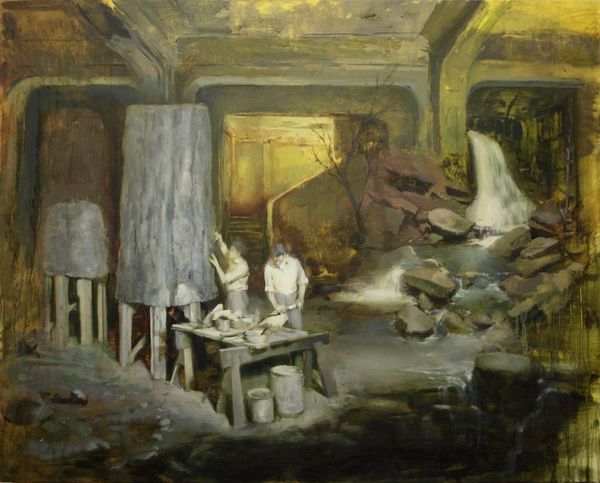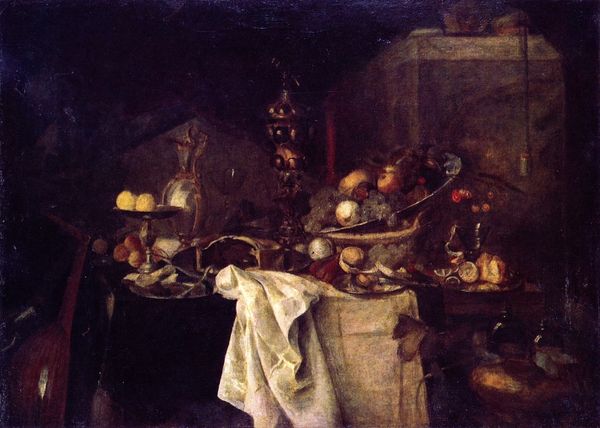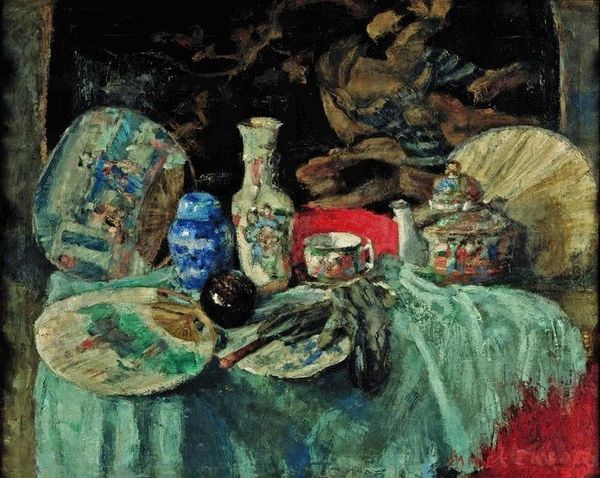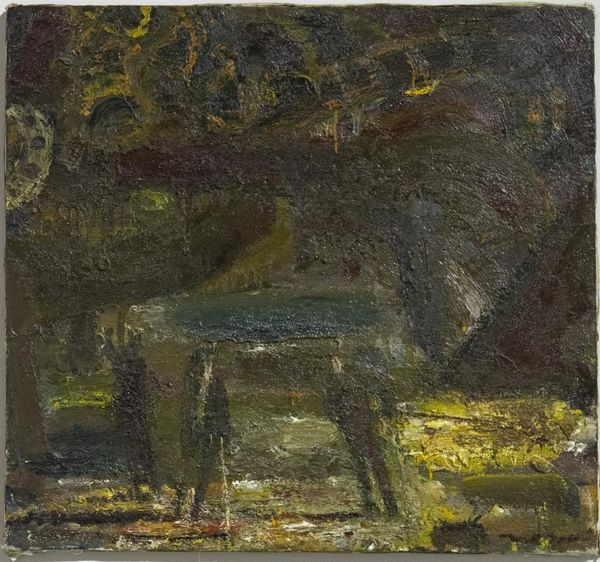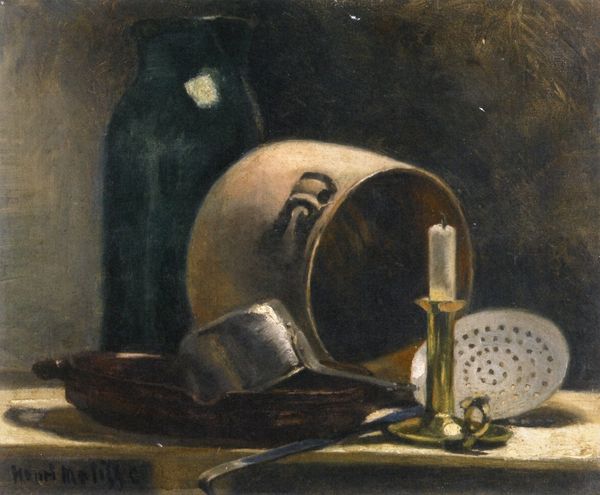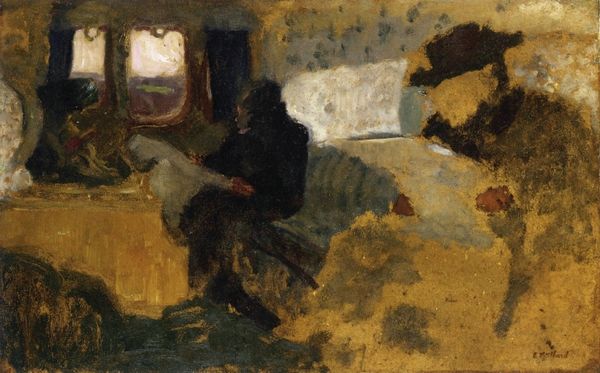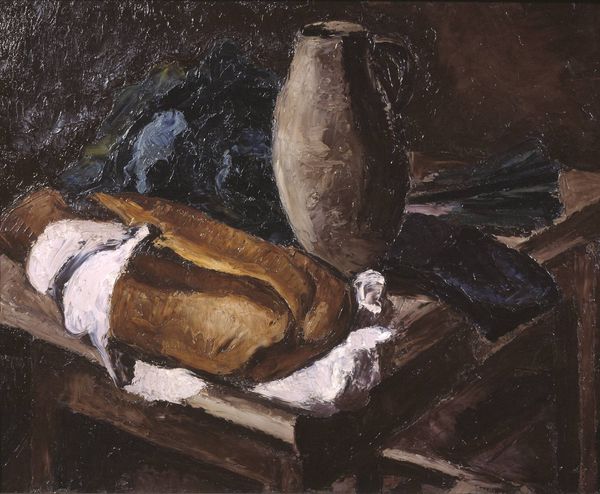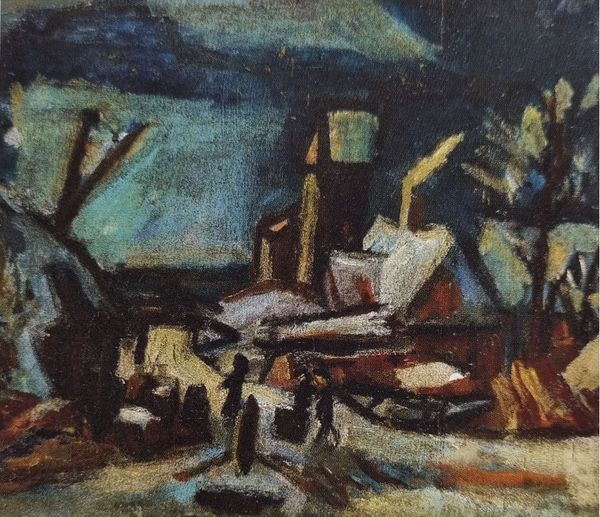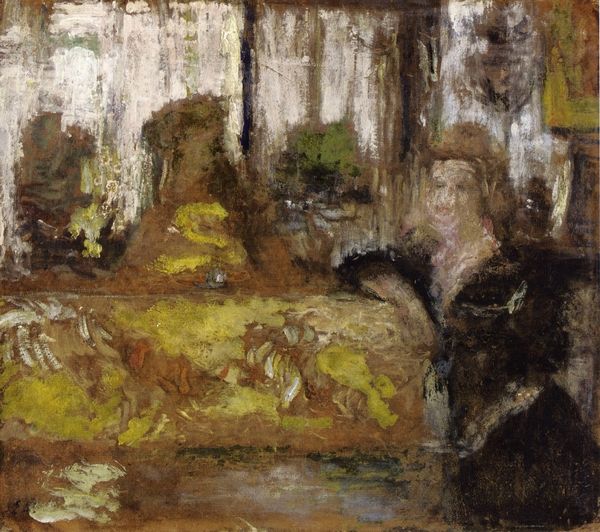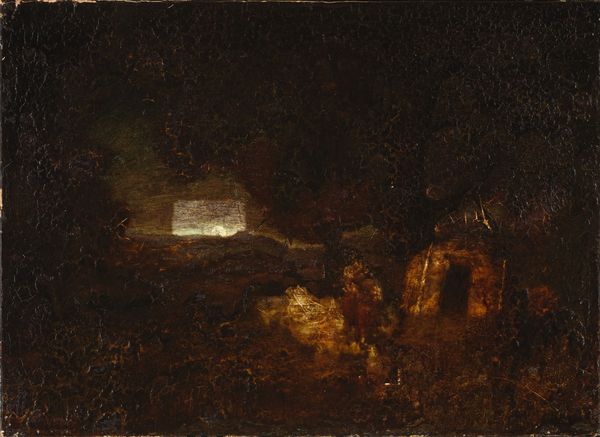
Copyright: Public domain US
Curator: Here we have Henri Matisse's "Lemons and Bottle of Dutch Gin," painted in 1896. What are your initial impressions? Editor: Stark! It feels surprisingly weighted, almost brooding for a still life featuring lemons. The textures are so heavy. You can sense the thickness of the paint. Curator: The somber tones and subdued light certainly diverge from the brighter palette Matisse later embraced. Observe how the composition centers on the interplay of forms – the cylindrical bottle, the rounded lemons, and the geometric planes of the table and book. This organization is very deliberate. Editor: Yes, and I am drawn to the materiality of the setting—rough table surface, coarse linen. Were these items from Matisse’s own domestic space? One wonders what class associations and lived experiences they evoke for both artist and viewer? Curator: Intriguing thoughts. One might say the subject matter takes a secondary role in the narrative; however, this allows Matisse to present to the observer a network of interlocking geometrical relations—one can understand the early genesis of his fauvist experimentation. Editor: Speaking of which, what sort of social spaces produced and supported artmaking with objects and spaces of leisure during Matisse's career? It appears he had relative comfort, which allowed access to gin and the time to observe these objects. Curator: A fascinating avenue to consider! To circle back to formalism, consider how Matisse contrasts textures—the rough ceramic of the gin bottle against the smooth, waxy surface of the lemons. The interplay between contrasting shapes evokes his formal experimentation that comes into full effect some 10 years later. Editor: Interesting; I might then ask to whom Matisse’s works catered during his beginnings. The setting of such genre scenes often conceals histories of colonial resource extractions – I'm only curious as to whose resources and labor supported them. Curator: An important critical lens to bring to any discussion about art history! Looking closely, "Lemons and Bottle of Dutch Gin" provides a subtle peek into what Matisse would develop further. Editor: Indeed! Material conditions shaped the evolution of art making, and so does close attention to form! Thank you!
Comments
No comments
Be the first to comment and join the conversation on the ultimate creative platform.
